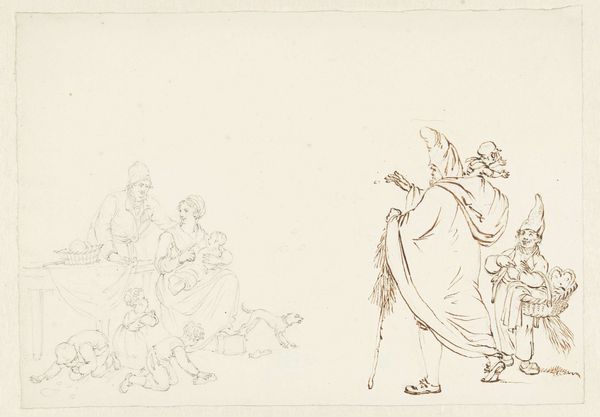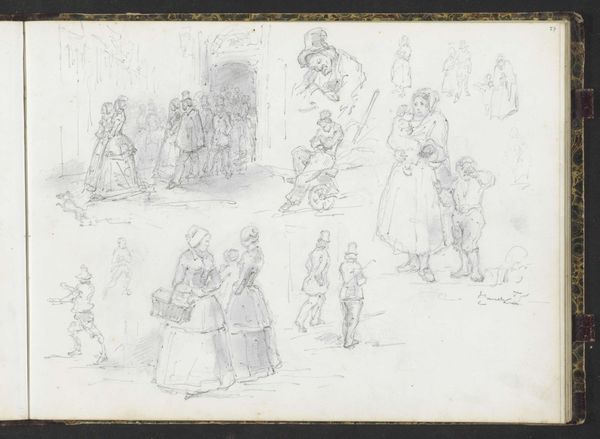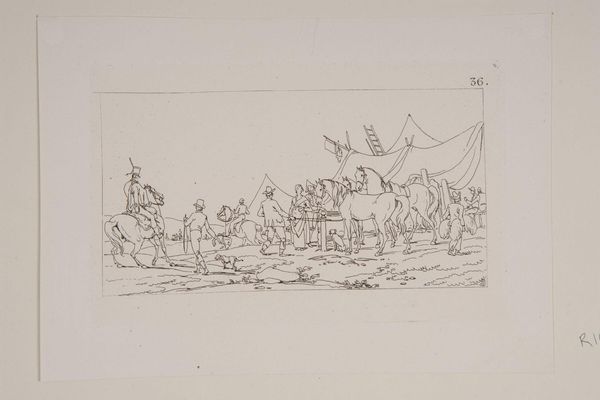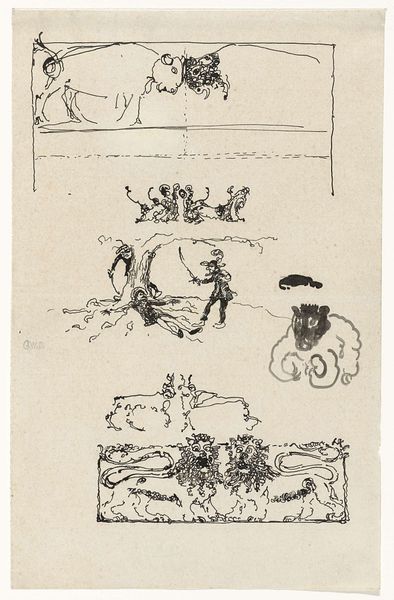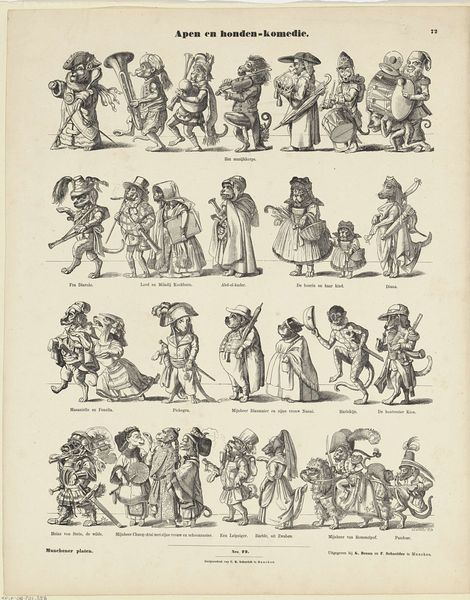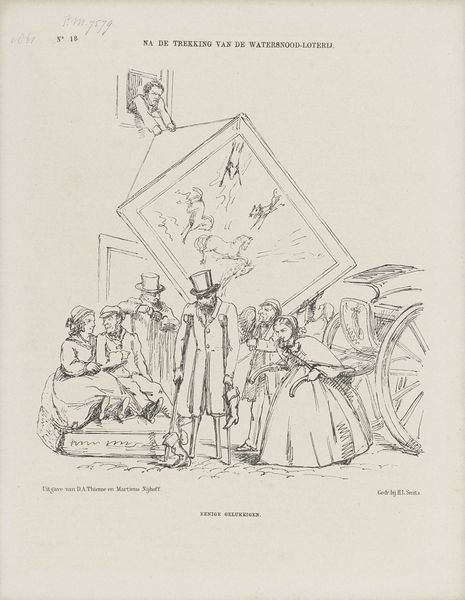
drawing, lithograph, print, ink
#
drawing
#
lithograph
# print
#
caricature
#
figuration
#
ink
#
romanticism
#
line
Dimensions: 7 1/8 x 28 1/4 in. (18.1 x 71.76 cm) (image, aggregate)
Copyright: Public Domain
Curator: Here we have Paul Gavarni's "La Procession du diable," created as a lithograph print in 1831. It's quite large for a print, taking up an entire wall it seems, and displays meticulous linework. What are your initial thoughts, Editor? Editor: Chaotic elegance! All these tiny figures swirling together create this macabre dance, or rather a frantic flee from…something. A playful nightmare, perhaps? Curator: Yes, Gavarni certainly possessed a knack for imbuing social commentary with fantastical elements. As a lithograph, the process would involve drawing with a greasy crayon onto a stone matrix, allowing for relatively easy reproduction and distribution compared to etching or engraving. Think of it as the meme format of its day. Editor: A meme, but one steeped in ink and possibly existential dread! I'm curious about the line quality, though. There is a sense of frenetic energy to it; some of those figures seem to leap off the paper. Curator: Gavarni would have understood the economic forces shaping Parisian society in the 1830s. Lithography, a cheaper way to distribute his work, helped grow his reach and offer critiques accessible to a wider, less elite audience. You notice this is very figure-heavy: we need to consider the economics of representation as well. Editor: It almost feels like he crammed every possible character, every social ill, into a single frame! Look, there is what appears to be a noble in a coffin pulled by poor people. Is this artwork then an assertion of its materiality? A depiction of its medium? It seems both artistic and crassly functional. Curator: Precisely! It’s mass production serving biting commentary. One might argue he is directly critiquing structures by embodying these ideas in their technical fabrication itself. A material declaration of imbalance, made accessible through industrial means. Editor: Looking closer, the dark humor really shines through. And I appreciate how his lines build into shadowy spaces and create such an intense feeling that seems just barely constrained by the edges of the page, threatening to erupt into something truly…diabolical? I quite like Gavarni’s procession and his method. Curator: It seems an ideal example where craft met cultural critique head on. Something to consider within a time marked by so many sociopolitical upheavals.
Comments
No comments
Be the first to comment and join the conversation on the ultimate creative platform.
